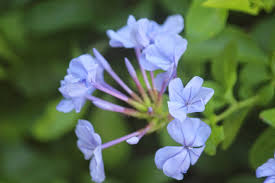Well, that bit of frost in early December turned into a hard freeze with the temperature dropping to 24 at one point. I was totally unprepared for THAT, so needless to say, we lost a lot of plants. Not the pumpkins, though.
My prized, very old Desert Rose plants both appeared totally dead. I could only hope some roots deep in the pots might send up new shoots, if and when spring arrived. I’m beginning to wonder if maybe the Earth has tilted on its axis and we are living in Zone 4 these days!
The big, very old white plumeria was ruined. Once again, hope was all I had.
The clump of bananas was totally black. I figured the trees were beyond hope, from the looks of them.
Naturally, the starfruit tree suffered. That poor thing has died back to the roots every winter since we planted it. The worst part was that it finally had a single small fruit this time. Sigh!
And all the moringa trees were dead.
All the ruined plants really depressed me. On top of that, a family situation developed that really changed life on our little farm.
Oh, well. Life goes on whether you feel depressed or not.
And around here, Winter disappeared as suddenly as it had arrived. We got a totally surprising rainfall and the weather has stayed somewhat warmer than normal ever since. By February, it was firmly into Spring and of course that meant “garden time”.
This year I decided to go back to container gardening, using the many Earthboxes I have, rather than struggling with raised beds and all the multitude of soil-born problems.
First of all, I tore up the raised beds and raked the soil in them over the low spots in the garden area. I kept the beds that run along the fence but I’m using them a bit differently. Instead of using them to grow vegetables, I’ve planted one section with three Barbados cherries and a citrus tree. The other section has blackberries planted. Since the fruiting plants are still quite small, I’ve planted some veggies in between them.
Then, I rolled out the heavy black stuff that I normally use as flooring in the shadehouse. It’s that woven plastic stuff you see in most plant nurseries. Keeps out the weeds and grass and provides a clean walkway.
Then I lined up the Earthboxes and started filling them with fresh soil.
I’ve used Earthboxes for a number of years in my container garden, but as with anything else, I only followed the directions for the first year or two. Then I began modifying little things here and there… and eventually my Earthbox garden became a weedy, tangled mess that didn’t produce much at all. That’s why I tried the raised beds when we moved here. This year, I’m going back to the basics and following the instructions to the letter.
I have pictures of the various stages of my Earthbox container garden. Stay tuned as I get them uploaded. Trust me… you will be totally amazed at my garden this year!







